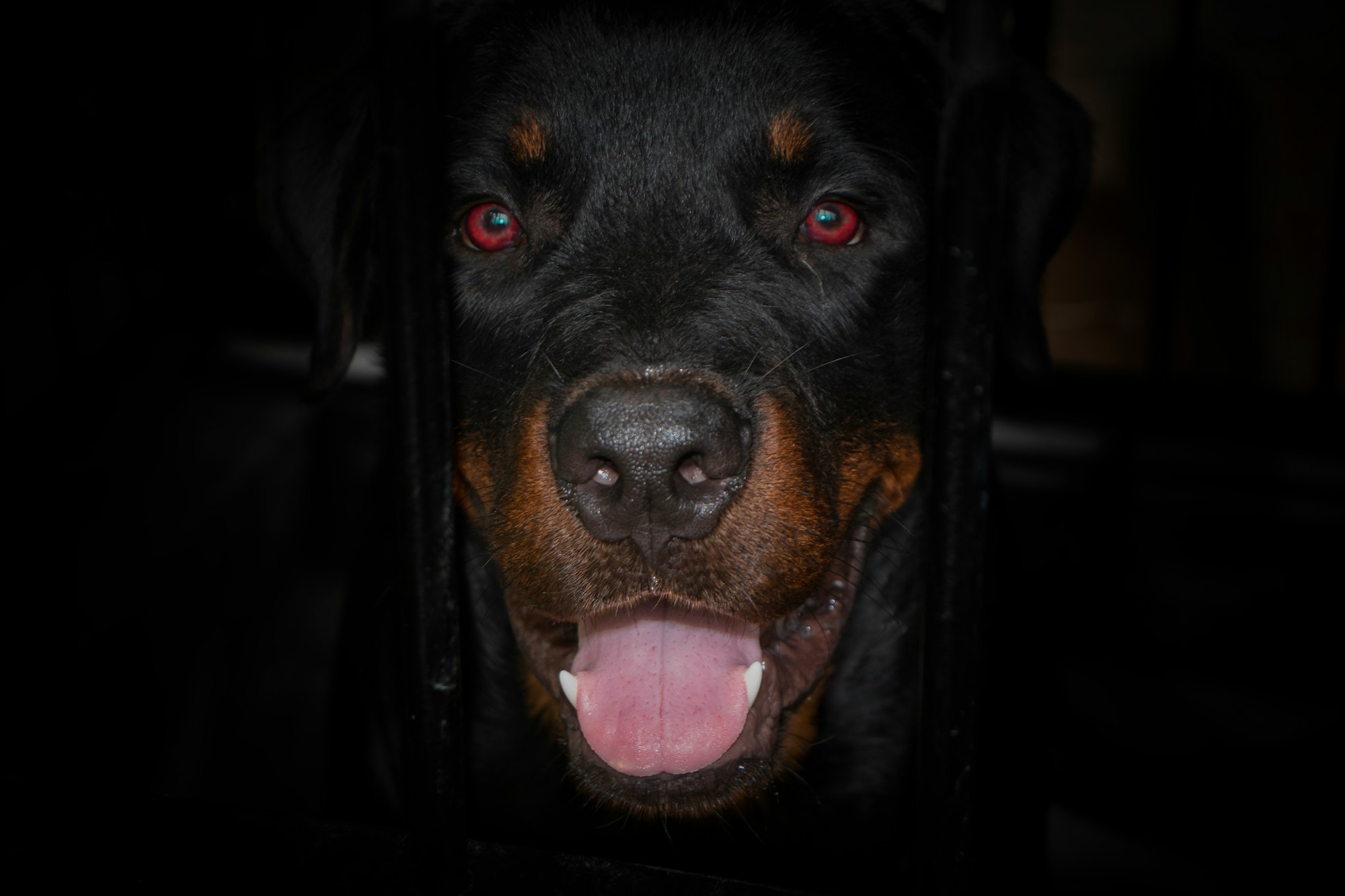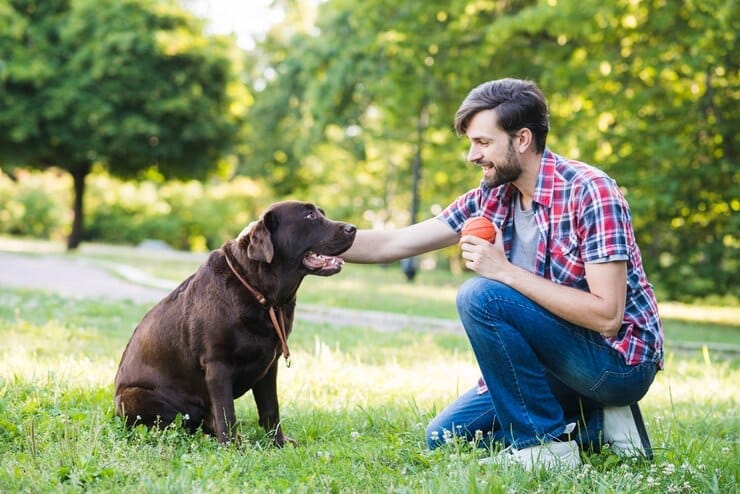Dogs are beloved pets around the world, known for their loyalty, affection, and playfulness. While we might think we know everything about our furry friends, there are still some questions that leave us scratching our heads. One such question is whether dogs have lips.
The short answer is yes, dogs do have lips, but they look different than human lips. In this blog post, we’ll dive into the specifics of what dog lips look like and what their functions are.
Why Do Dogs Have Lips?
So, what purpose do dog lips serve? The primary function of dog lips is to help them hold and manipulate their food. The muscles in the lips allow dogs to grip and chew their food, preventing it from slipping out of their mouths. Additionally, dog lips help to protect the mouth from dirt, dust, and other foreign objects that could potentially cause harm.
Dog lips also play a role in a dog's communication. While dogs primarily rely on body language and vocalizations to communicate, they can also use their lips to convey different emotions. For example, a relaxed dog may have slightly parted lips, while a dog feeling anxious or stressed may tightly press their lips together.
It’s worth noting that some dog breeds have more pronounced or noticeable lips than others. Breeds like Bloodhounds, Basset Hounds, and Boxers are known for their droopy lips, which can make them look sad or gloomy, but also serve a practical purpose in keeping their mouths clean.

The Anatomy of Dog Lips
To start, let's take a closer look at the anatomy of dog lips. Unlike human lips, which are composed of soft, pliable tissue, dog lips are made up of more rigid muscle tissue. They are essentially folds of skin that surround the mouth and are connected to the gums, forming a sort of seal.
Dog lips also differ from human lips in that they do not have a distinct border or vermilion line, which is the darker, reddish-pink border between the skin and the pink or red lip tissue. Instead, dog lips are usually the same color as the surrounding fur, though some breeds may have more pigmented or spotted lips.
What Are The Lips of a Dog Called?
The lips of a dog are often referred to simply as "dog lips" or "canine lips." However, in veterinary and anatomical terms, the lips of a dog are sometimes called "labia" (singular: "labium").
This terminology is not unique to dogs, as "labia" is a term used to describe the lips of any mammal. In veterinary medicine, the term "labial" can also be used to describe structures that are associated with the lips, such as the labial glands, which are small sebaceous glands located on the inner surface of a dog's lips.
It's worth noting that the term "labia" can also refer to other structures in the female reproductive system, such as the labia majora and labia minora. However, in the context of a dog's anatomy, the term "labia" specifically refers to the lips.
Overall, while the term "labia" may not be as commonly used as "dog lips," it is a valid anatomical term that accurately describes this important part of a dog's anatomy.
What are the Bumps on Dog Lips Called?
The bumps or ridges on a dog's lips are known as "ruga" or "rugal folds." These folds are a normal part of a dog's anatomy and serve an important function in helping dogs grip and manipulate their food.
The rugal folds on a dog's lips act as a sort of conveyor belt, moving food towards the back of the mouth and helping dogs maintain a secure grip on their food while they chew. The folds also help to create suction, which can help dogs drink liquids more efficiently.
The rugal folds are more pronounced in some dog breeds than others. Breeds with droopy or loose lips, such as Bloodhounds or Basset Hounds, may have more pronounced folds, while breeds with tighter or more compact lips, such as Greyhounds or Whippets, may have less pronounced folds.
It's worth noting that while the rugal folds on a dog's lips are a normal and important part of their anatomy, they can also be a site of bacterial growth and accumulation of food debris, particularly in dogs with poor dental hygiene. Regular dental check-ups and teeth cleaning can help prevent dental issues and keep a dog's lips and mouth healthy.
Why Are Dog Lips Black?
The color of a dog's lips can vary depending on the breed, individual genetics, and even their age. However, in many cases, a dog's lips are black or darkly pigmented, particularly in breeds with darker fur.
The reason for the dark coloration of a dog's lips has to do with the presence of melanin, a pigment that gives color to skin, hair, and other parts of the body. Melanin is produced by special cells called melanocytes, which are found in the skin and other tissues, including the lips.
In dogs, the amount of melanin produced by the melanocytes in the lips can vary depending on the breed and individual genetics. Some breeds are known for having more pigmented lips than others, such as the Rottweiler or the Doberman Pinscher, which often have black lips.
The dark pigmentation of a dog's lips can also serve a functional purpose. The melanin in the lips can help protect the skin from the damaging effects of sunlight and other environmental factors. Additionally, the dark coloration can help absorb heat, which can be helpful for dogs in colder climates.
It's worth noting that while the vast majority of dogs have black or darkly pigmented lips, there are some breeds, such as the Chow Chow, that can have pink or light-colored lips. In these cases, the lack of pigmentation in the lips is due to a genetic trait.

Can Dogs Smile?
Dogs are known for their expressive faces, and many pet owners believe that their dogs can smile. While dogs can certainly express joy and contentment, whether or not they can actually "smile" in the same way that humans do is still a topic of debate among scientists and dog behaviorists.
A dog's face is highly expressive, and they use a range of facial expressions to communicate with their humans and other dogs. A relaxed and happy dog may have a relaxed open mouth, raised eyebrows, and a slightly tilted head. Some dogs may also pull back their lips slightly, which can create the appearance of a "smile."
However, it's important to note that dogs do not smile in the same way that humans do. A dog's facial expressions are primarily related to their mood and body language, rather than an intentional attempt to convey a specific emotion or message. Additionally, dogs do not have the same muscles in their faces that humans do, which means that their ability to create a true smile is limited.
That being said, there is no denying that many dogs appear to "smile" when they are happy and content. Whether it's a wagging tail, a relaxed posture, or a slightly open mouth, dogs have a wide range of ways to show their happiness and affection. For many pet owners, the appearance of their dog's "smile" is a beloved and heartwarming aspect of their bond.
Why Does My Dog Lick Their Lips?
When a dog licks their lips, it can have a variety of meanings depending on the context and the individual dog. Here are some possible explanations:
- Anxiety or stress: Dogs may lick their lips when they are feeling anxious or stressed. This can be a calming signal to themselves or to others, and can be a way of self-soothing.
- Nausea or digestive issues: Licking the lips can be a sign of nausea or discomfort in the digestive system. This can be accompanied by other symptoms such as vomiting, diarrhea, or loss of appetite.
- Anticipation: Dogs may lick their lips in anticipation of food, treats, or other rewards. This can be a learned behavior, as they associate the action with positive outcomes.
- Submission: In some cases, a dog may lick their lips as a way of showing submission or deference to another dog or person.
- Sign of illness: Licking the lips excessively or persistently can be a sign of an underlying health issue, such as dental problems or allergies. If you notice your dog licking their lips more than usual, it's a good idea to consult with a veterinarian.
Overall, when a dog licks their lips, it's important to consider the context and other behaviors or symptoms they are exhibiting. While it's often a harmless behavior, it can also be a sign of underlying health or behavioral issues that may require attention.
Final Thoughts
In conclusion, dogs do have lips, but they are different than human lips in both their appearance and function. While they may not be the most distinctive feature of our four-legged friends, their lips play an important role in their daily lives. So the next time you're admiring your dog's adorable face, take a closer look at their lips and appreciate all the ways they help your pup navigate the world around them.
For more helpful articles about pet-parenting tips, check out the Off Leash blog at TryFi.com.
Want to know more about TryFi.com? The Fi Dog Collar is a GPS tracking collar that not only keeps track of your dog’s location, activity levels, and sleep patterns, but it also alerts you if your dog escapes your backyard. This is the fastest way to find your dog after an escape. Try the Fi Dog Collar today!

